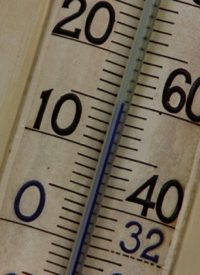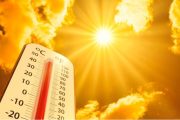
As much as the scientists at the center of Climategate wish it would just fade away, new evidence keeps surfacing to fan the flames of controversy. The latest item regards weather monitoring stations situated in remote parts of rural China.
The Climategate e-mails implicate two influential climate researchers in fraudulent cover-up of Chinese temperature data. According to The Guardian, the numbers didn’t fit with their climate models showing dramatic rise in global warming. The researchers are Dr. Phil Jones, director of the Climatic Research Unit (CRU) of East Anglia University (a group influential in composing the UN’s keystone climate reports), and Dr. Wei-Chyung Wang, a professor at the University at Albany.
In 1990, Jones and Wang published a paper in the journal Nature concluding the “urban heat effect” has little to do with global warming. They used temperature data from a quickly urbanizing area of eastern China to illustrate their findings, specifically data from 84 weather stations with few significant moves. The issue of moves was important to prove how significantly urban sprawl affected temperature readings at originally outlying stations over time. The UN’s 2007 climate report, known as the Fourth Assessment Report or AR4, quoted the Nature paper saying that urban sprawl has little to do with rising global temperatures.
Once AR4 made its debut, mathematician Doug Keenan questioned the legitimacy of the Jones/Wang research and accused the climate scientists of fraud. Of the 84 stations Jones and Wang referenced, Keenan discovered that 35 of them had substantial moves and the remaining 49 had no histories, so moves could not be determined. His findings were published in the peer-reviewed journal Energy & Environment.
Keenan e-mailed Wang threatening to submit a public allegation of research misconduct to the University at Albany if he did not retract. Keennan copied Phil Jones, and Jones immediately sent it on to colleagues Michael Mann with Pennsylvania State University and Kevin Trenberth with the National Center for Atmospheric Research in Colorado, both of whom are equally influential in compiling data for UN climate reports. Jones bewailed, “I seem to be the marked man now!”
Mann and Trenberth were quick to quiet his nerves. “This is all too predictable. This crowd of charlatans is always looking for one thing they can harp on,” wrote Mann. “They are simply hoping to blow this up to something that looks like a legitimate controversy. The last thing you want to do is to help them by feeding the fire. Best thing is to ignore them completely. They no longer have their friends in power here in the U.S., and the media has become entirely unsympathetic…”
Trenberth took a different tack, advising, “I don’t think you can ignore it all, as Mike suggests as one option, but the response should try to somehow label these guys and (sic) lazy and incompetent and unable to do the huge amount of work it takes to construct such a database.” He continued, “My feeble suggestion is to indeed cast aspersions on their motives and throw in some counter rhetoric. Labeling them as lazy with nothng (sic) better to do seems like a good thing to do.”
Jones for the most part did ignore Keenan’s request, making excuses the original source data was no longer available or too burdensome to recompile. The University at Albany exonerated Wang after conducting a private investigation, the results of which they refused to publish.
However, the now-public Climategate e-mails reveal evidence of fraud. As media reports circulated anew in 2009, Jones’ former boss who was head of CRU when the Nature article was published, Dr. Tom Wigley, wrote to Jones, “I have always thought [Wang] was a rather sloppy scientist. I therefore would not be surprised if he screwed up here.” Wigley went on to suggest their claims of choosing stations with “relatively few, if any changes in instrumentation, location or observation times” could be reinterpreted to mean that the stations had only to meet one of those criteria instead of all three. “Why, why, why did you and [Wang] not simply say this right at the start? Perhaps it is not too late?” whined Wigley. “I am concerned because all this happened under my watch as Director of CRU and, although this is unlikely, the buck eventually should stop with me.”
His suggestion of covering lies with more lies is especially damning in light of the fact that in 2007, when Keenan first leveled his complaints, Wigley wrote Jones, “Seems to me that Keenan has a valid point. The statements in the papers that he quotes seem to be incorrect statements, and that someone ([Wang] at the very least) must have known at the time that they were incorrect.” Equally contradictory is the fact that Jones published 2008 research in the Journal of Geophysical Research Atmospheres holding the urban heat effect responsible for 40 percent of warming in eastern China in the last half of the 20th century.
The “Chinagate” scandal continues to undermine the credibility of AR4, already under fire over proven exaggerations about Himalayan glacier melt, debunked claims that The Netherlands are drowning, and false assertions the Amazon jungles are morphing into grasslands, all because of man-made global warming. As Keenan told The Guardian, “My interest in all this arises from concern about research integrity, rather than about global warming per se. Jones knew there were serious problems with the Chinese research, yet continued to rely upon the research in his work, including allowing it to be cited in the IPCC report.”




